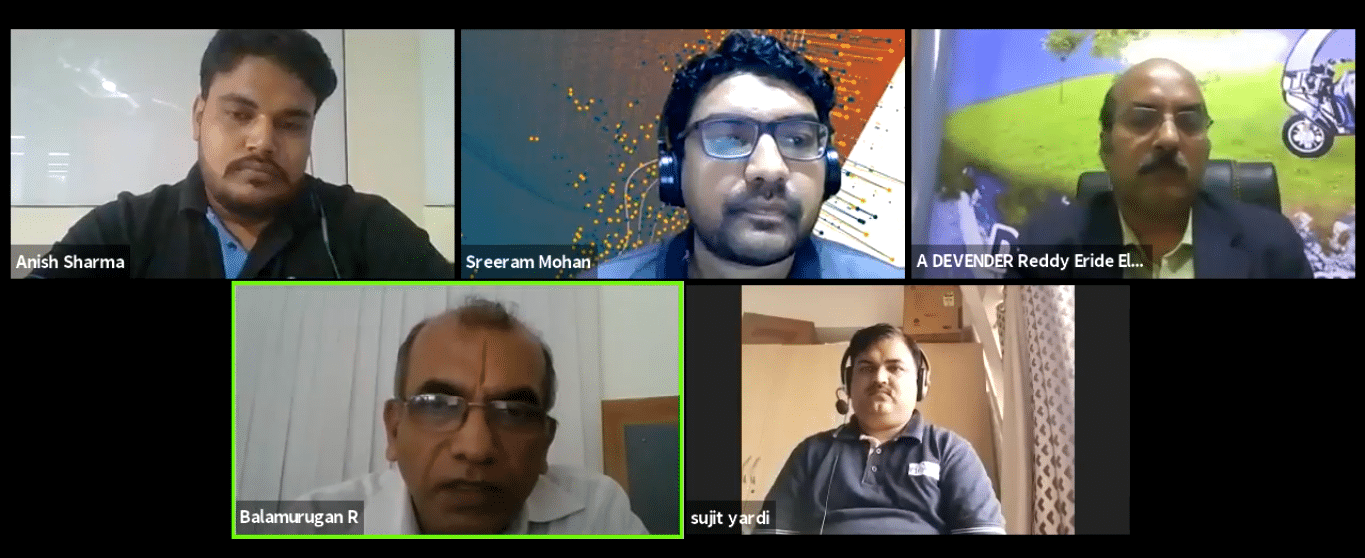
The gradual shift towards Electric vehicles (EVs) is bringing up new opportunities and innovations, proving advantageous for establishing smart cities. At the same time, there are certain challenges as well that need to be addressed for scaling up this sector.
In India, the EV market is largely dominated by two-wheelers. According to reports, it is estimated that within the next 5-10 years, the number of four and two-wheelers in the EV segment will overtake normal petrol and diesel vehicles.
With this in mind, a panel of experts comprising of Anish Sharma, IoT, EV and Charging Infra Architect, Yulu Bikes; Sreeram Mohan, Director, Embedded Development – Altair; Sujit Yardi, Chief Engineer, Devise Electronics and R Balamurugan, CEO, Pulsars, and moderated by Devender Reddy, Founder & CEO, Eride E-mobility discussed how latest technologies can help in shaping up EV design and EV ecosystem at the recently held India Technology Week 2020 (also known as Tech World Congress).
The discussion centred around a range of topics such as chargeable batteries for EV, EV simulation, Battery Management Systems (BMS) and telematics.
It is possible to employ chargers at home just as there are chargers for laptops and smartphones. However, the safety of the user should be of prime concern.
“Factors such as short circuit, overvoltage, undercurrent, ground faults and all related faults should be detected by the system, notified to the user and recovered. To achieve that, safety features for EV charging should be implemented in charging stations/ chargers,” said Anish Sharma. “You need to have all the related data coming to your charging system network and analyse the system performance.”
Balamurugan R added, “It is necessary to have a communication protocol implemented so that the battery is able to tell the charger about specific charging levels.”
To provide an innovative approach with respect to complex challenges faced by EV designers, virtual automotive simulation can play a vital role in doing so.
“There are simulation tools out there that are very sophisticated. We should look at what are the available technologies and put that to use rather than go and make a product, and later figure out how to suit different situations (like different environments and operating conditions),” said Sreeram Mohan. “More simulation can help bring down cost and pain at the end of the day.”
Battery Management System is an integral part and requires efficient coordination with VCU and motor. Implementation of SAE standards is necessary for better control. Smart BMS devices need to have CAN interfaces through which all necessary charging data can be obtained and communicated to the charging station.
Telematics can assist in managing the fleet operation. It generally works by having a service provider having all data who can do predictive analysis, which can be then viewed by a fleet operator or a user to monitor vehicle performance with regards to efficiency. Vehicle security from any interference (in the form of hacking) is also essential.
“Telematics and IoT go hand-in-hand. So we need to track the asset as well as see the vehicle performance and provide it to the customer based on the number of usages,” said Sujit Yardi.
Finally, the panellists discussed the reason for slow growth of the EV market in India. To compete with giants such as Tesla, the R&D teams should give more attention to details and have an eagerness to do better on their own. Rather than playing safe (by relying only on 2-wheelers), the focus should also move towards entering the 4-wheeler domain.





